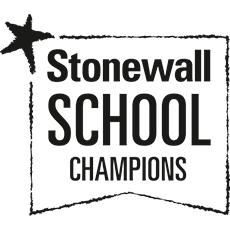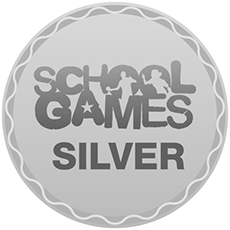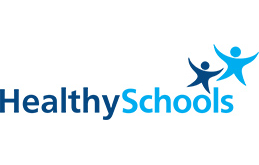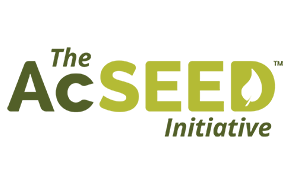Year End Targets
Year 3 Reading
I can use my knowledge of root words , prefixes ( including dis-, mis-, il-, im-, ir-) and suffixes (including -ly) to help me read aloud and to understand the meaning of new words. (Word Reading)
I can read further exception words including words that do not follow spelling patterns. (Word Reading)
I can make reading fun by listening to and discussing stories, poems, plays and non-fiction work. (Comprehension)
I can show that I enjoy reading by reading lots of different types of books. (Comprehension)
I can read a wide range of books including fairy stories, myths and legends and retell some of them to others. (Comprehension)
I can tell you what a book that I am reading is about. (Comprehension)
I can read aloud poems and perform play scripts. (Comprehension)
I can discuss words in the books that I read that excite me. (Comprehension)
I can understand what I have read, checking that it makes sense by talking to others about it. (Comprehension)
I can ask questions about the texts that I have read to help me understand them. (Comprehension)
I can work out what a character in a book is feeling by the actions they take and can explain how I know. (Comprehension)
I can predict what might happen from clues in what I have read. (Comprehension)
I can tell someone about the main ideas in a paragraph. (Comprehension)
I can say how a text is organised to help me understand it using paragraphs, headings, subheadings and inverted commas to show speech. (Comprehension)
I can use non-fiction texts to find out information on a subject. (Comprehension)
I can talk about books and poems and I can take turns in telling people about them. (Comprehension)
Year 3 Writing
I can use the prefixes un-, dis-, mis-, re-, pre-. (Spelling)
I can add suffixes beginning with vowel letters to words of more than one syllable e.g. forgetting, preferred, gardening, limited. (Spelling)
I can use the suffix -ly. (Spelling)
I can spell words with endings sounding like ‘zh’ and ‘ch’ e.g. treasure, measure, picture, nature. (Spelling)
I can spell words with endings which sound like ‘zhun’ e.g. division, decision. (Spelling)
I can spell words which sound the same but have different meanings brake/break, fair/fare, grate/great, groan/grown, here/hear, heel/heal/he’ll, mail/male, main/mane, meat/meet, peace/piece, plain/plane. (Spelling)
I can spell words that are often misspelt. (Spelling)
I can spell words containing the ‘i’ sound spelt ‘y’ elsewhere than at the end of words e.g. myth, gym. (Spelling)
I can spell words containing the ‘u’ sound spelt ‘ou’ e.g. young, touch, double. (Spelling)
I can spell words with the ‘k’ sound spelt ‘ch’ e.g. scheme, school, echo. (Spelling)
I can spell words with the ‘sh’ sound spelt ‘ch’ e.g. chef, machine. (Spelling)
I can spell words with the ‘ay’ sound spelt ‘ei’, ‘eigh’ or ‘ey’ e.g. eight, they. (Spelling)
I can use the first two or three letters of a word to check its spelling in a dictionary. (Spelling)
I can write from memory simple sentences, dictated by the teacher, that include words and punctuation I already know. (Spelling)
I can use more of the diagonal and horizontal strokes I need to join letters and know which letters, when they are next to one another, are best left unjoined. (Handwriting)
I can write so that most of my letters are easy to read, all the same way up and the same size. My writing is spaced properly so that my letters don’t overlap. (Handwriting)
I can plan my writing by discussing it and talking about how to improve it using examples from other writers that I like. (Composition)
I can plan my writing by talking about the important parts to have in a story, poem, an explanation or non-fiction piece and I can re-edit it. (Composition)
I can rewrite my work making improvements by saying the work out loud, using the best words I know and making sure I: use conjunctions such as when, before, after, while; use adverbs such as then, next and soon; use prepositions such as before, after, during, in and because. (Composition)
I can use paragraphs to organise my writing so that blocks of text group related material. (Composition)
I can draft and write descriptive work that creates settings, characters and plots. (Composition)
I can draft and write material such as instructions, using headings and sub-headings to organise my work. (Composition)
I can re-read my work to improve it for my audience. (Composition)
I can re-read my work to improve it by thinking about changes to vocabulary and grammar to make it more interesting. (Composition)
I can proof read my work by reading aloud and putting in capital letters and full stops. I can also add commas, question marks, exclamation marks and apostrophes where needed. (Composition)
I can read my work out to a group with confidence and make sure it sounds interesting using the right volume and tone of voice. (Composition)
I can create new words using a range of prefixes including super-, anti-, auto-. (Vocabulary, Grammar and Punctuation)
I can understand when to use ‘a’ or ‘an’ in front of a word. (Vocabulary, Grammar and Punctuation)
I can identify word families based on root words e.g. solve, solution, dissolve, insoluble. (Vocabulary, Grammar and Punctuation)
I can talk about time, place and cause using these words: when, before, after, while, so, because, then, next, soon, therefore, before, after, during, in, because of. (Vocabulary,Grammar and Punctuation)
I can use paragraphs. (Vocabulary, Grammar and Punctuation)
I can use headings and sub-headings. (Vocabulary, Grammar and Punctuation)
I can use the present perfect form of verbs e.g. He has gone out to play contrasted with He went out to play. (Vocabulary, Grammar and Punctuation)
I can use speech marks correctly sometimes. (Vocabulary, Grammar and Punctuation)
I can understand what the following words mean: word family, prefix, clause, subordinate clause, direct speech, consonant, consonant letter vowel, vowel letter, inverted commas.
(Vocabulary, Grammar and Punctuation)
Year 3 Maths
I can count from 0 in multiples of 4, 8, 50 and 100 and can find 10 or 100 more or less than a given number. (Number and Place Value)
I can recognise the place value of each digit of a number with hundreds, tens and units. (Number and Place Value)
I can compare and order numbers up to 1000. (Number and Place Value)
I can find, show and estimate numbers using objects and pictures. (Number and Place Value)
I can read and write numbers to 1000 in numerals. (Number and Place Value)
I can read and write numbers to 1000 in words. (Number and Place Value)
I can solve number and word problems. (Number and Place Value)
I can add and subtract numbers in my head, including a three digit number and ones. (Addition and Subtraction)
I can add numbers with up to three digits using formal column methods. (Addition and Subtraction)
I can add and subtract numbers in my head, including a three digit number and tens. (Addition and Subtraction)
I can subtract numbers with up to three digits using formal column methods. (Addition and Subtraction)
I can add and subtract numbers in my head, including a three digit number and hundreds. (Addition and Subtraction)
I can estimate the answer to a calculation and use this and inverse operations to check answers. (Addition and Subtraction)
I can solve problems, including missing number problems, using number facts, place value, and more complex addition and subtraction. (Addition and Subtraction)
I can recall and use multiplication and division facts for the 3, 4 and 8 times tables. (Multiplication and Division)
I can calculate multiplication and division problems, both mentally and in writing, using the times tables, including two digit numbers times one digit numbers. (Multiplication and Division)
I can solve problems, including missing number problems, involving multiplication and division, including factors and ratio. (Multiplication and Division)
I can count up and down in tenths and know that tenths are made from dividing an object into 10 equal parts and in dividing one-digit numbers or quantities by 10. (Fractions)
I can write and find fractions of a set of data and can recognise fractions with small denominators. (Fractions)
I can find and use fractions of numbers such as 1/4 of 8 = 2 and 3/4 of 8 = 6. (Fractions)
I can identify and show equivalent fractions. (Fractions)
I can add fractions with the same denominator within one whole. (Fractions)
I can subtract fractions with the same denominator within one whole. (Fractions)
I can compare and order fractions with the same denominator. (Fractions)
I can solve fraction problems. (Fractions)
I can measure, compare, add and subtract: lengths (m/cm and mm); mass ( kg/g); volume and capacity (l/ml). (Measurement)
I can measure the perimeter of simple 2-D shapes. (Measurement)
I can add and subtract money giving change, using pounds and pence. I can do this with real coins and notes. (Measurement)
I can tell the time on a clock face. I can do this if it uses the Roman numerals from I to XII and I can use 12-hour or 24 hour clocks. (Measurement)
I can write the time on a clock face. I can do this if I use Roman numerals from I to XII and I can use 12-hour or 24 hour clocks. (Measurement)
I can estimate and read the time to the nearest minute. I can record time in seconds, minutes and hours. I can use the words o’clock, a.m., p.m., morning, afternoon, noon and midnight. (Measurement)
I can tell you the number of seconds in a minute and how many days there in a month, a year, and in a leap year. (Measurement)
I can compare how much time is taken by different events or tasks. (Measurement)
I can draw 2-D shapes and make 3-D shapes using modelling materials. I can recognise 3-D shapes in different orientations. (Properties of Shape)
I can recognise angles as properties of shape. I know that angles are a description of a turn. (Properties of Shape)
I can spot right angles. I can spot when angles are greater or less than a right angle. (Properties of Shape)
I know that two right angles make a half-turn, three make three quarters of a turn and four make a full turn. (Properties of Shape)
I can spot horizontal and vertical lines and pairs of perpendicular and parallel lines. (Properties of Shape)
I can interpret and present data using bar charts, pictograms and tables. (Statistics)
I can solve one-step and two-step questions e.g. “How many more?” and “How many fewer?” using information presented in scaled bar charts, pictograms and tables. (Statistics)






